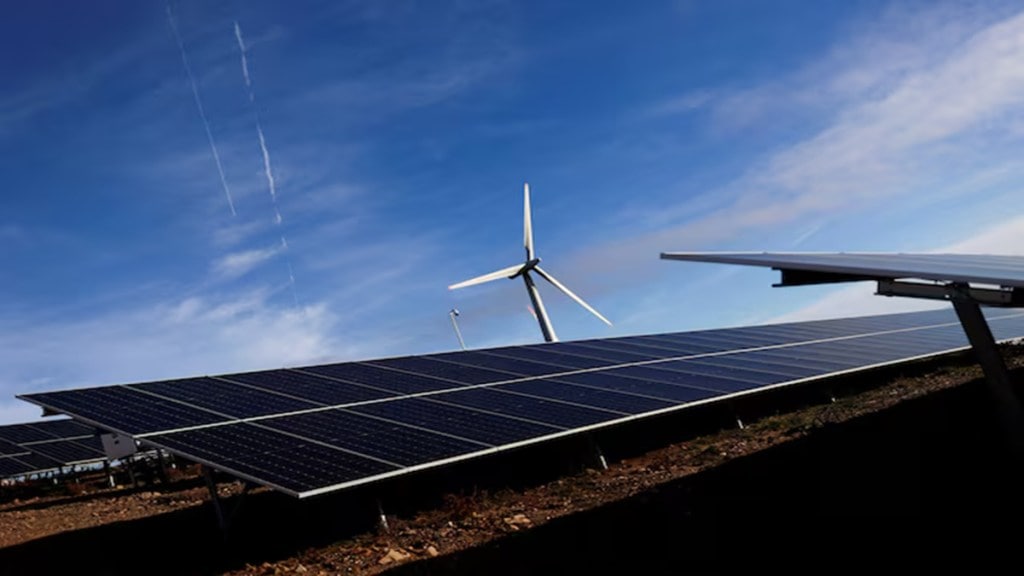A slowdown in tendering activity for renewable energy (RE) projects has cast doubts about India’s ability to meet the target of installing 500 gigawatts (GW) of green power capacity by 2030.
What has slowed the pace of bidding out of new projects, and a dampening of short-term investor interest is primarily a delay in signing of power purchase agreements by the RE implementing agencies like the Solar Energy Corporation of India (SECI).
As of now, over 40 GW of awarded RE projects remain stranded.
At the core of the problem is transmission constraints, or issues around connecting RE, which is intermittent by nature, to the grid.
Industry players say though the country’s vision to lead the global energy transition is ambitious but achievable, its pace depends on how swiftly India aligns renewable generation with grid readiness.
As per Icra, the country auctioned a meagre 3.4 GW of green capacity in the first half of the current financial year. The slowdown in bidding activity over the past few months is attributed to delays in the signing of power sale agreements (PSAs) by the bidding agencies with state distribution utilities, which in turn put off PPAs.
In FY25, the tendering pipeline in the RE sector remained large with 40.2-GW capacity being auctioned, following 47 GW in FY24.
“Over 50 GW of awarded projects remain stranded due to these very challenges, creating a ripple effect across the value chain,” said Simarpreet Singh, director & CEO at Hartek Group.
RE capacity addition improved to 20.1 GW in the first five months of FY26 from 9.0 GW in the same period of FY25 driven by a large project pipeline and expiry of waiver on interstate transmission charges. However, with the implementation of awarded projects being slow, new tenders are being deferred.
While Icra estimates the capacity addition to further scale up to over 35 GW this fiscal, it also remains cautious about the delay in signing PPAs/PSAs.
“At Hartek Group, we experience this first-hand. The solution lies in coordinated action in enforcing time-bound PPA signings, accelerating transmission clearances, and incentivising high-voltage equipment manufacturing to reduce lead times,” Singh said.
Grid constraints, particularly in renewable-heavy states like Rajasthan and Gujarat, have led to large-scale curtailments of generation, in some cases up to 50% of solar output.
Akshay Hiranandani, CEO at Serentica Renewables pointed out that the slow progress in commissioning key transmission corridors and the prioritisation challenges under General Network Access coupled with Available Transfer Capacity congestion have further deepened the mismatch between generation growth and transmission readiness.
In addition to these, execution challenges, exposure to fluctuating equipment prices, supply chain concerns on equipment availability and cost of capital are the key headwinds for developers in the near term. Also, development of cost competitive storage capacities remains important for RE integration, Icra said.
The rationalisation of GST rates on green energy equipment and changes to the effective date for applicability for Approve List of Manufacturers and Models for solar cells has created expectations of lower tariffs for the discoms. This has, however, led to uncertainty over the future of bids issued in the past 12 months, where PPA/PSA signing is pending.
Delays in signing PPAs and providing connectivity has also resulted in revenue losses running into hundreds of crores for the industry. For instance, a 1 GW curtailment for just four hours daily over ten months can translate into Rs 360 crore of revenue losos at a tariff of Rs 3 per unit.
“This is a setback that can erode debt servicing capability and long-term returns. It is critical to accelerate grid augmentation through dynamic line rating, STATCOMs, and storage integration, while ensuring transparent PPA timelines and accountability for grid readiness,” Hiranandani said. Only a stable and predictable framework for evacuation and offtake will enable India to add the 50 GW of renewable capacity it must annually to stay on course for its 2030 targets, he added.
ACME Solar and AMPIN Energy have already sought compensation for financial losses caused by delays in setting up transmission infrastructure, preventing them from evacuating power from their solar projects. While ACME Solar has sought over Rs 210 million in compensation, AMPIN Energy has not yet specified the amount of its losses.
In certain parts of the country, such as Rajasthan, delay in the commissioning of transmission infrastructure is not merely a loss to the generator but also to the nation as clean energy is lying idle instead of reaching the grid.
“We are legally entitled to compensation for the generation losses incurred due to delays in commissioning of the transmission infrastructure. Our forced reliance on T-GNA (open access) has resulted in repeated curtailments and under-utilisation of available capacity which affects our ability to dispatch power despite being fully ready to perform,” Pinaki Bhattacharyya Founder, MD & CEO, AMPIN Energy Transition told FE.
The Ministry of New and Renewable Energy is now planning to rebid the stranded capacity that largely consisted of plain solar or wind projects. The government plans to remodel these capacities as hybrid, integrating them with a battery energy storage system (BESS) so that it can be used in peak solar hours, officials have earlier told FE.
Union minister for new and renewable energy Pralhad Joshi has also earlier said that he is talking with states to convince them to fast track signing of PPAs, not waiting for tariffs to come down further.
Besides, the RE Implementing Agencies (REIAs) including SECI will now bid projects clubbed with BESS. The move would mitigate the risk associated with the intermittent RE generation by using a combination of wind, solar and storage systems, Icra notes.
At present India’s power generation capacity is evenly balanced between RE and fossil-fuel units. But RE accounts for barely a fifth of supplies during peak hours, due to connectivity and storage issues. Significantly, addition of coal-based power was also trailing targets by a wide margin in recent years, though lately there has been a revival of investor interest in the sector.

